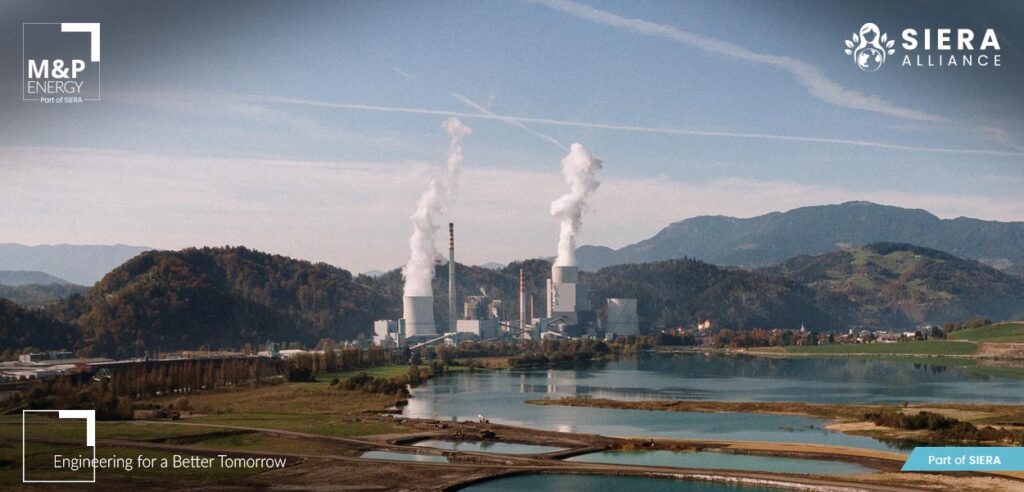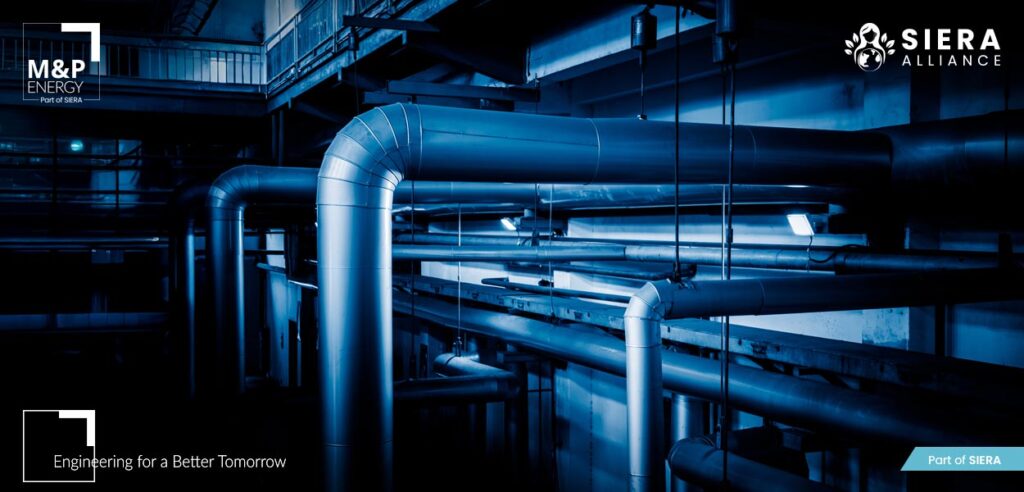Originating from geological processes and the decay of radioactive elements, geothermal energy harnesses heat from beneath the Earth’s surface. Although geothermal has powered electricity systems in countries like Italy and the United States for well over a century, it still represents only a fraction of global power — approximately 0.3% of electricity generation as of 2022. At M&P Energy, part of SIERA, we help accelerate geothermal adoption because of its ability to deliver consistent and low-carbon renewable energy. In this article, we will explore the leading strategies, key technologies and future considerations that make geothermal energy a promising long-term investment.
Why Is It Considered Renewable Energy From the Ground?
Originating from the Earth’s internal heat — which is caused by the decay of radioactive elements and the Big Bang — geothermal energy is continuously replenished by natural processes, rendering it inexhaustible and renewable. Unlike solar or wind, it delivers power 24/7, independent of local conditions like weather or time. This reliability makes geothermal energy as an energy source both stable and sustainable. Geothermie als Energiequelle sowohl stabil als auch nachhaltig.
Brief History and Global Usage Trends
Geothermal energy was first harnessed in Italy in 1904 before expanding quickly in regions with high heat resources. Today, countries like New Zealand, Iceland, Kenya and the United States lead deployment. Despite relatively slow global growth — just 382 megawatts (MW) added in 2024 — new technologies like enhanced geothermal systems (EGS) are poised to greatly expand potential, particularly in Europe.
Understanding Geothermal Energy
How Geothermal Power Works
Im Kern nutzt ein geothermisches Energiesystem At its core, a geothermal power system taps into the Earth’s heat through wells drilled into heated water or rock. This thermal energy is used for electricity generation via steam turbines, or alternatively, in direct heating systems. Aquifer Thermal Energy Storage (ATES) systems circulate groundwater to extract heat in winter and return cooled water seasonally.
Types of Geothermal Resources
- High-temperature reservoirs (> 150°C) used for gigawatt-scale electricity generation.
- Low-temperature reservoirs (50 -150°C) suitable for district heating and industrial
- Shallow geothermal systems (e.g., < 200 m depth) use ground-source heat pumps in buildings. These systems require thoughtful shallow geothermal system design for efficiency and sustainability.

Geothermal Energy in Practice
Benefits of Geothermal Energy
Geothermal power ranks high in sustainability, requiring minimal land use and generating minimal emissions. Geothermal systems produce very low carbon dioxide (CO2) — often less than 5 gCO2 / kWh — making geothermal one of the cleanest renewable energy options available. In the long-term, it is also cost-efficient due to long system lifespans and low operating expenses.
Applications of Geothermal Energy
Geothermal energy is a highly adaptable renewable resource that supports a wide range of applications — from household comfort to industrial efficiency and national energy security. However, there are three broad sectors where geothermal energy is making a measurable impact:
- Residential Heating and Cooling
In residential settings, geothermal energy is primarily used for heating and cooling through ground source heat pumps (GSHPs) and aquifer thermal energy storage (ATES) systems. GSHPs circulate a fluid through underground loops to either absorb heat in the winter or dissipate it in the summer, dramatically reducing energy consumption when compared to conventional HVAC systems.
ATES systems, on the other hand, store heat or coolness in natural aquifers, allowing buildings to cut energy bills, reduce reliance on fossil fuels and enhance indoor comfort — all while minimizing their environmental footprint. - Industrial Uses
Industries have long benefited from geothermal energy as an energy source for processes that require stable, low-to-medium temperature heat. One prominent application is greenhouse heating, where geothermal heat maintains controlled climates for crop production year-round. This not only boosts agricultural productivity but also reduces the carbon emissions associated with fossil-fuel-based heating.
Other industrial uses include drying crops, pasteurization, brewing and even mineral processing. By using geothermal energy in manufacturing and food production, companies can lower operational costs, improve energy efficiency and meet growing sustainability and ESG standards. - Electric Power Generation
Where underground temperatures are high enough, geothermal energy is used to generate electricity through steam turbines. Traditional geothermal power plants are located in regions with natural geothermal reservoirs, where high-pressure steam can be directly extracted to drive turbines and produce clean, baseload electricity.
However, advances in Enhanced Geothermal Systems (EGS) are expanding this potential. EGS involves drilling into hot dry rock and injecting fluid to create artificial geothermal reservoirs, making it possible to generate power in areas without natural hydrothermal conditions. This emerging technology could transform geothermal energy into a globally scalable solution for clean electricity.
Planning Geothermal Systems
The Need for Proper Planning
Effective geothermal system planning reduces technical and financial risks, maximizes geothermal plant efficiency and ensures regulatory compliance. Feasibility studies and environmental assessments help further align designs with licensing and public safety norms.
Role of Specialized Geothermal Companies
Professional firms, like M&P Energy, conduct rigorous site surveys and feasibility assessments, allowing for detailed design before installation. These specialized geothermal companies ensure that systems are tailored to local geology, regulatory landscapes and performance goals.
Geothermal Consulting and Planning Process
Key Stages:
- Initial consultation to understand project needs
- Environmental impact assessment to measure potential impacts
- Permitting and approvals aligned with EU and local standards
- Project execution, including drilling, system installation and commissioning.
This structured geothermal consulting and planning approach ensures projects stay on track, compliant and cost-effective.
Involvement of Experts
A geothermal specialist planner oversees system design and regulatory coordination, while a geothermal expert assessor evaluates subsurface potential, environmental impact and resource yield. Their collaboration provides technical confidence and ensures compliance.
Geothermal Engineering Design
Advanced Techniques
Selecting optimal materials, modeling subsurface heat and flow and optimizing efficiency are key to effective geothermal engineering design. Digital simulation tools can further enhance efficiency by predicting aquifer behavior, system output and thermal sustainability.
Designing Shallow Geothermal Systems
In residential and light commercial settings, shallow geothermal system design must consider the soil’s thermal conductivity, building load profiles and geological constraints to maximize operational performance while minimizing environmental footprint.
Innovations in Geothermal Extraction Technology
- Enhanced geothermal systems (EGS) use hydraulic, thermal or chemical simulation to create reservoirs in low-permeability rock. European projects (MEA, DEEPEGS) demonstrate that EGS can be implemented across Europe.
- Closed-loop systems circulate fluid through buried piping, isolating it from geological formations.
- Hybrid geothermal-solar solutions integrate subsurface heat with solar thermal or photovoltaic systems for resilient, low-carbon energy supply.

Tap Into the Earth’s Heat with Geothermal Energy
Geothermal energy is a powerful and growing part of the global clean energy landscape, offering a reliable, scalable and low-emission resource drawn from the Earth itself. Future trends, such as EGS deployment and hybrid system integration, promise to extend geothermal reach across Europe and beyond.
To begin your geothermal journey — whether it’s using geothermal energy for heating or generating clean electricity — M&P Energy, part of SIERA, offers structured geothermal project planning, expert consulting and tailored engineering design grounded in best practice and sustainability.
Partner with us to tap into the Earth’s heat, reduce carbon footprints and build resilient energy systems grounded in sustainable innovation.
Frequently Asked Questions (FAQs)
1. What is geothermal energy?
Geothermal energy is heat extracted from beneath the Earth’s surface and used for electricity, heating or cooling. It’s a clean and renewable energy from the ground.
2. How does a geothermal power system work?
Geothermal systems use underground heat or hot water, converting it into energy through turbines or transferring it via heat exchangers for residential and industrial use.
3. Is geothermal energy truly renewable?
Yes. Geothermal energy is sustainable because the Earth’s heat is continuously replenished, making it a reliable, long-term energy source.
4. What is a shallow geothermal system?
Shallow geothermal systems use ground-source heat pumps to provide heating and cooling, typically from depths of less than 200 meters.
5. What are the benefits of using geothermal energy?
It offers stable energy output, low carbon emissions, long system lifespan and high efficiency — making it ideal for sustainable development.
6. Can geothermal energy be used for home heating?
Yes. Groundwater or shallow geothermal systems can efficiently heat homes through underfloor heating, radiators or hot water systems.
7. What is involved in geothermal project planning?
Planning includes site surveys, environmental impact studies, permitting and system design — typically managed by geothermal specialist planners.
8. What is enhanced geothermal technology?
Enhanced Geothermal Systems (EGS) use stimulation techniques to unlock geothermal energy in areas without naturally permeable rock formations.
9. How do I start a geothermal project with M&P Energy?
Contact our team at info@siera-alliance.com for a consultation. We will guide you through feasibility studies, system design, installation, and regulatory approvals tailored to your site.


